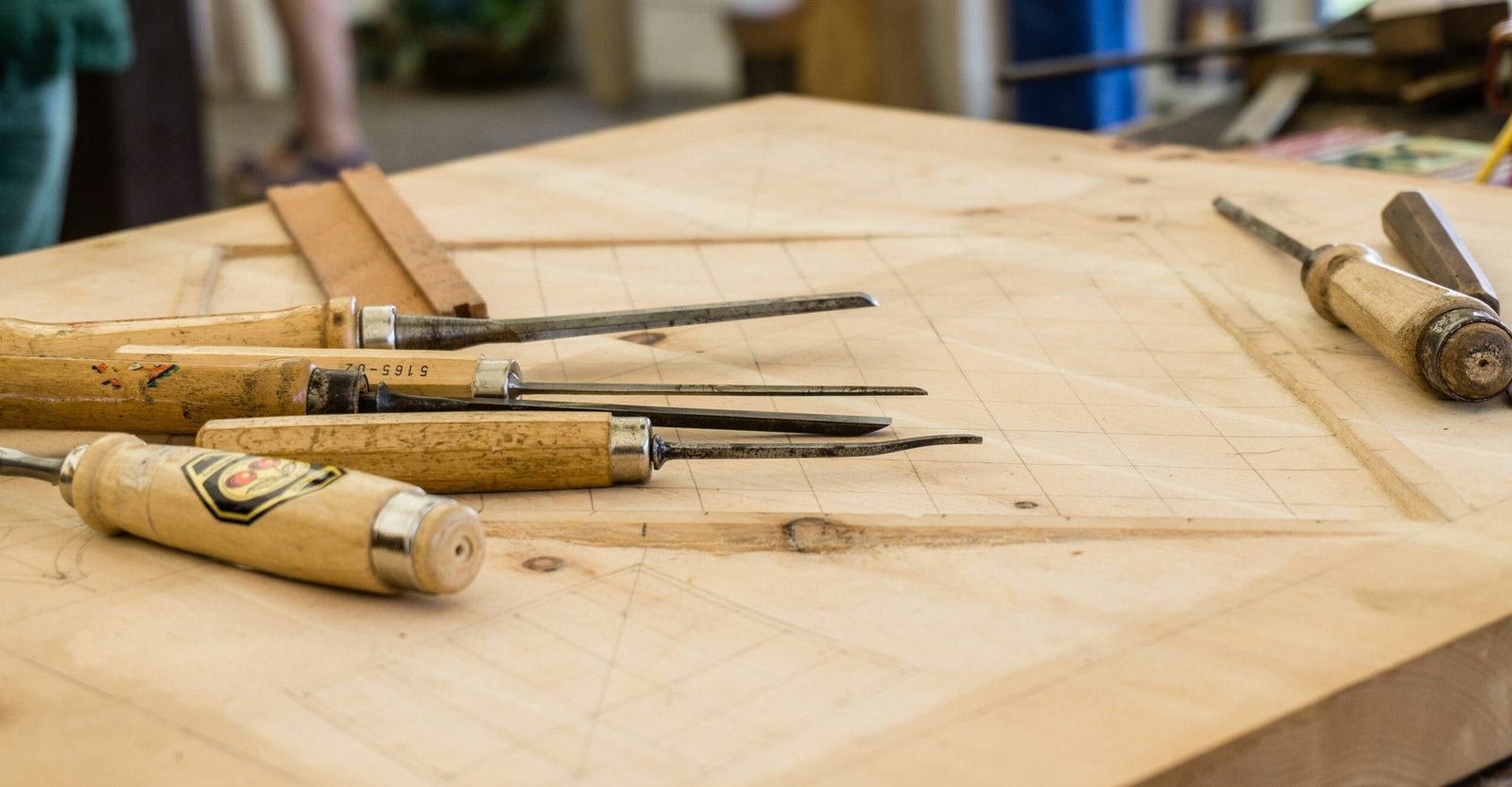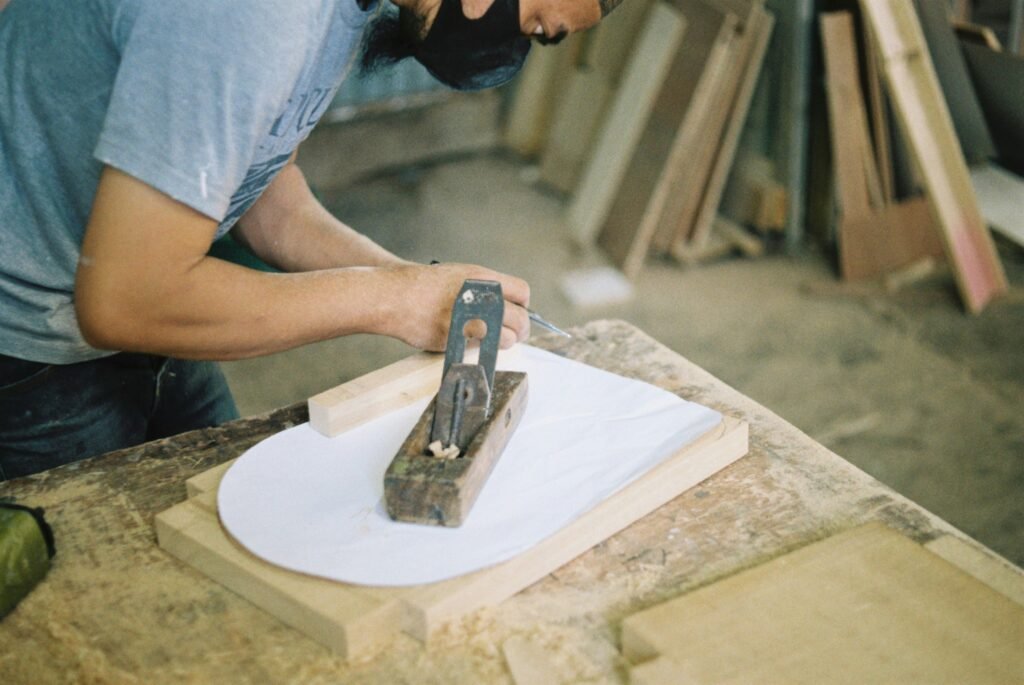Woodworking is a craft that requires both skill and meticulous attention to detail. One of the fundamental aspects of successful woodworking is precision, which plays a critical role in determining the quality of the final product. Accurate cuts not only enhance the aesthetic appeal of a project but also ensure structural integrity and functionality. Whether one is constructing furniture, cabinetry, or intricate woodworking pieces, precision serves as the cornerstone for high-quality craftsmanship.
The significance of precision in woodworking extends beyond mere measurements. When cuts are made accurately, each piece of wood fits together seamlessly, resulting in cleaner joints and a more polished appearance. Misaligned cuts can lead to gaps, incorrect angles, and ultimately, a lack of satisfaction with the project. For any woodworker, be they novice or seasoned, mastering the techniques that enhance cutting precision is key to achieving desired outcomes while avoiding rework or material waste.
Moreover, precision in woodworking fosters a sense of confidence in one’s abilities. As woodworkers become adept at making precise cuts, they are more likely to experiment with complex designs and larger projects. This can lead to a deeper enjoyment of the craft as they push their creative boundaries. Furthermore, the reliance on precision cultivates a habit of careful planning and execution, which can be beneficial in various aspects of life. In essence, the journey towards mastering woodworking techniques not only hones the physical skills needed for accuracy but also builds a disciplined mindset.
Ultimately, understanding the importance of precision in woodworking is crucial for anyone looking to create high-quality pieces that stand the test of time. By prioritizing accurate cuts and committing to continuous improvement, woodworkers can achieve exceptional results that are both rewarding and enjoyable.
Essential Tools for Precise Cuts
Woodworking requires an array of tools designed to facilitate precision cuts, essential for achieving professional-quality results. Among the most fundamental tools in woodworking are handsaws, which range from traditional panel saws to specialized rip and crosscut saws. Each type of handsaw is crafted to serve specific cutting needs, enabling woodworkers to execute clean, accurate cuts on various materials.
Another critical power tool is the circular saw. Offering versatility and mobility, it allows woodworkers to make straight cuts in large sheets of plywood and other materials. Circular saws come with adjustable blades that can be set to different depths, providing further customization and control for precise cuts. Additionally, miter saws, which are specifically designed for making angled cuts, are indispensable when creating intricate projects such as picture frames or crown molding. These saws feature a rotating arm that enables users to slice through wood at various angles, ensuring the perfect fit for each joint or connection.
Table saws are also vital for woodworking; their flat surfaces support larger workpieces, making them ideal for rip cuts and crosscuts. With the ability to make highly accurate cuts, table saws often become the cornerstone of any woodworking shop. To ensure precision across all these tool types, measuring tools like tape measures, squares, and calipers are indispensable. These tools facilitate accurate measurements, which are crucial for aligning cuts and achieving symmetry in projects.
Investing in high-quality tools and understanding their specific functions is essential for any woodworker aiming for precise cuts. By utilizing the appropriate tools, one can enhance accuracy and quality in woodworking projects, ultimately leading to greater satisfaction and success in craftsmanship.
Measuring and Marking Techniques
Accurate measuring and marking are fundamental steps in woodworking that directly influence the quality of the final product. Before making any cuts, it is crucial to establish precise measurements and delineate clear lines. Utilizing a measuring tape is essential for determining the length and width of pieces, ensuring that each measurement is marked accurately. It is advisable to use a tape that has clear, easy-to-read markings for enhanced efficiency. When measuring, always extend the tape flat and avoid bending it to prevent inaccuracies.
A square, particularly a combination square, plays an important role in achieving right angles and ensuring that marking lines are straight and true. When working with larger pieces of wood, a framing square can significantly enhance the accuracy of layout lines. Align your square with the edges of the material, and mark as necessary to achieve the desired dimensions. Additionally, traditional marking tools such as pencils, chalk lines, and marking knives offer specificity when outlining cuts. A marking knife is particularly beneficial for scribing lines; it creates a slight groove in the material, providing reference points that can minimize splintering during the cutting process.
Incorporating layout lines is another technique that can enhance precision. Using chalk lines or a straightedge allows woodworkers to visualize their cuts clearly across larger surfaces. Scribing involves lightly cutting the outline of the intended cut, providing a guide to follow, which reduces the risk of error. It is essential to frequently check measurements and cross-reference lines throughout the marking process, as slight discrepancies can lead to significant issues once cutting begins. Taking the time to measure and mark accurately will save effort and materials in the long run.
Cutting Techniques for Accuracy
Achieving precise cuts in woodworking is pivotal for ensuring the overall quality of any project. One of the fundamental aspects to enhance cutting accuracy is the proper setting of blade angles. Depending on the type of cut required—be it cross cuts, rip cuts, or beveled cuts—adjusting the blade to the correct angle is essential. A miter saw, commonly used for angled cuts, can deliver exceptional precision when the angles are correctly calibrated. Regularly checking and adjusting the blade angles will greatly contribute to the quality of the finished piece.
Utilizing guides and jigs can also significantly improve the accuracy of cuts. These tools act as reliable frameworks that help maintain the alignment of the wood during the cutting process. For instance, a straight edge guide can help achieve clean, straight cuts by acting as a barrier against the saw blade. Additionally, specialized jigs, such as dovetail jigs or circle cutting jigs, allow woodworkers to create intricate joints and shapes with remarkable precision, reducing the risk of error that often occurs with freehand cutting.
The importance of maintaining a steady hand cannot be overstated. A stable grip on the tool, combined with a firm stance, contributes to the consistency of the cuts. Woodworkers should practice control and patience, particularly when dealing with intricate cuts or tougher woods. Furthermore, understanding the unique properties of different types of wood—such as hardness, grain direction, and density—can influence cutting techniques. Softwoods, for instance, may cut more smoothly than hardwoods, necessitating adjustments to speed and pressure applied during cuts.
Ultimately, mastering cutting techniques involves a combination of precise blade adjustments, the use of supportive tools like guides and jigs, and honing one’s manual dexterity. By focusing on these elements, woodworkers can achieve the accuracy essential for crafting quality pieces that meet their project specifications.
Common Mistakes and How to Avoid Them
Woodworking is a craft that requires precision and attention to detail, yet many woodworkers encounter common pitfalls that can compromise the quality of their cuts. A frequent issue is mismeasurement, where the carpenter measures inaccurately, leading to pieces that do not fit as intended. To avoid this mistake, it is imperative to always double-check measurements before making any cuts. Utilizing tools such as a quality combination square or a reliable tape measure can significantly enhance accuracy.
Another common error occurs with incorrect saw settings. Different cutting tasks require distinct saw configurations; for instance, using the wrong blade type or improperly adjusted cutting angles can lead to suboptimal results. It is essential to consult the tool’s manual for the appropriate settings before initiating a cut. Moreover, ensuring that the blade is sharp and in good condition can greatly improve cutting efficiency, resulting in cleaner edges and reducing the likelihood of tear-out.
Inconsistent cutting speed is yet another mistake that can affect the quality of a woodworker’s output. Varying the speed while cutting can result in uneven edges or splintering. To mitigate this issue, it is advisable to maintain a steady, controlled speed throughout the cutting process. Practicing on scrap materials can help woodworkers develop a more consistent rhythm, thereby promoting improved technique over time.
Lastly, neglecting to secure the workpiece can lead to movement during cutting, which may cause both safety hazards and inaccurate cuts. Using clamps to stabilize the wood is a straightforward yet crucial practice that ensures precision. By being cognizant of these common mistakes and taking proactive measures to avoid them, woodworkers can achieve better outcomes and elevate their craftsmanship.
Maintaining Your Tools for Precise Cuts
To achieve precise cuts in woodworking, maintaining your tools is paramount. A well-maintained tool not only enhances the quality of your work but also improves the overall safety of the woodworking process. Regular maintenance routines should be established to ensure that saw blades remain sharp and functional. Dull blades can cause rough edges, splintering, and may require excessive force, which can lead to accidents. Regularly inspecting and sharpening saw blades contributes to cleaner and more accurate cuts.
Calibration is another critical aspect of tool maintenance. Tools such as miter saws or table saws require regular checking and adjustment to maintain their accuracy. Over time, the settings on these tools can drift, leading to cuts that are off from the desired measurements. By routinely calibrating your equipment according to the manufacturer’s guidelines, you can ensure that the tools will consistently deliver the precision necessary for your projects.
Keeping tools clean is equally important in their upkeep. Dust and debris can accumulate on cutting surfaces and moving parts, affecting the tool’s performance. After each use, make it a habit to clean your tools thoroughly. This may involve blowing out dust, wiping down surfaces, and applying lubricants when necessary to keep mechanical parts functioning smoothly. A clean tool not only operates more effectively, but it also extends the lifespan of the device, reducing the likelihood of malfunctions during critical cutting processes.
In summary, maintaining your tools is essential to achieving precision in woodworking. By implementing regular maintenance routines for saw blades, ensuring accurate calibration, and keeping tools clean, you can significantly enhance their performance and the quality of your finished projects. Investing time in tool maintenance pays off by ensuring that your woodworking endeavors meet the highest standards of accuracy and excellence.
Practicing Your Skills
Mastering woodworking techniques requires consistent practice, particularly when it comes to making precise cuts. As you embark on your woodworking journey, engaging in targeted exercises can significantly enhance your skills. Here are a few practice pieces that can help you focus on precision cutting while also allowing for creativity and exploration.
One effective project is creating simple wooden boxes. This task necessitates accurate measurements and cuts to ensure the pieces fit neatly together. Start with a basic design, using 1×6-inch boards to construct a small box. Focus on making square corners and straight edges; these fundamental skills will translate into more complex projects over time. As you gain confidence, experiment with various angles and joinery techniques, pushing your limits and refining your abilities.
Another excellent practice exercise involves cutting joinery joints, such as mortise and tenon or dovetail joints. These joints are not only essential for creating strong connections between pieces but also serve as a measure of precision in your cuts. Begin with simple joinery exercises using scrap wood to minimize material waste as you perfect your technique. This approach allows you to develop an understanding of how to align your cuts accurately, as well as the importance of tool selection and setup.
For those looking for a more structured practice, consider following online tutorials that guide you through specific projects. These projects often emphasize precision cuts and can range from constructing furniture to crafting small decorative items. By following along with experienced woodworkers, you will learn crucial methods and gain insight into making precise measurements and cuts.
Ultimately, the key to mastering woodworking skills lies in consistent practice. By engaging in various exercises and projects, you will develop confidence in your cutting abilities and witness your progress over time. Remember, each cut you make contributes to your overall growth as a woodworker.
Advanced Techniques for Professional Woodworkers
As woodworkers progress in their craft, the pursuit of precision often leads them to explore several advanced techniques crucial for achieving impeccable cuts. One of the most prominent tools employed by professional woodworkers is the Computer Numerical Control (CNC) machine. This technology allows artisans to perform intricate cuts with remarkable accuracy, significantly reducing the margin for error and enhancing overall efficiency. The CNC machine operates through pre-programmed software that dictates the movements of the cutting tool, making it an invaluable asset in both furniture production and custom woodworking projects.
Another innovative cutting method gaining popularity among experts is laser cutting. This technique utilizes high-powered lasers to create precise and intricate designs on wood surfaces. The benefits of laser cutting extend beyond precision; the heat generated by lasers minimizes the chance of wood splintering or tearing, resulting in clean edges and a superior finish. Moreover, laser cutters can replicate detailed patterns consistently, making them ideal for prototyping and small-scale production runs.
In addition to investing in advanced machinery, professional woodworkers employ various strategies to ensure flawless cutting results. One such technique is the use of a high-quality saw blade tailored for specific materials, as the right blade can significantly affect the cut’s smoothness. Another essential practice is to prioritize material preparation, which includes meticulously measuring and marking cuts before initiating the process. Proper alignment of the workpiece with the cutting tool can reduce the likelihood of mistakes and enhance accuracy.
Woodworkers seeking to elevate their skills should also focus on continuous learning and practice. Engaging with expert workshops, reading specialized literature, or participating in online forums can provide invaluable insights into advanced methodologies and innovative tricks of the trade. Incorporating these practices into one’s routine will inevitably lead to improved precision and craftsmanship in woodworking.
Conclusion: The Art of Precision in Woodworking
The journey through the various woodworking techniques illustrates the paramount importance of precision in crafting high-quality pieces. Whether through the initial planning stages, careful measuring, or the final cuts, each step contributes significantly to the overall success of a project. Precision is not merely a guideline; it is the foundation upon which the integrity and aesthetic appeal of any woodworking endeavor are built.
Throughout this blog post, we have emphasized various methods to enhance accuracy, such as investing in reliable tools, adopting careful measuring practices, and honing cutting techniques. The discussion also touches on the significance of understanding grain direction, selecting the right type of wood, and utilizing appropriate jigs and fixtures to improve cut consistency. Each of these elements plays a critical role in achieving the precise outcomes that every woodworker strives for, ultimately leading to better craftsmanship and greater satisfaction in the finished product.
As woodworkers, it is essential to recognize that the path to mastery involves continuous learning and practice. Engaging with the woodworking community, seeking constructive feedback, and embracing new techniques are all valuable steps toward refining one’s skillset. By dedicating time and effort to practicing precision, enthusiasts will not only see improvements in their work but will also foster a deeper appreciation for the craft.
In conclusion, mastering woodworking techniques necessitates a commitment to precision. By prioritizing accuracy in every stage of the woodworking process, individuals can elevate their craftsmanship, produce exceptional pieces, and ultimately enjoy the rewarding experience that woodworking has to offer. Embrace the journey of skill refinement and apply the principles discussed in this blog post to achieve your woodworking goals.



